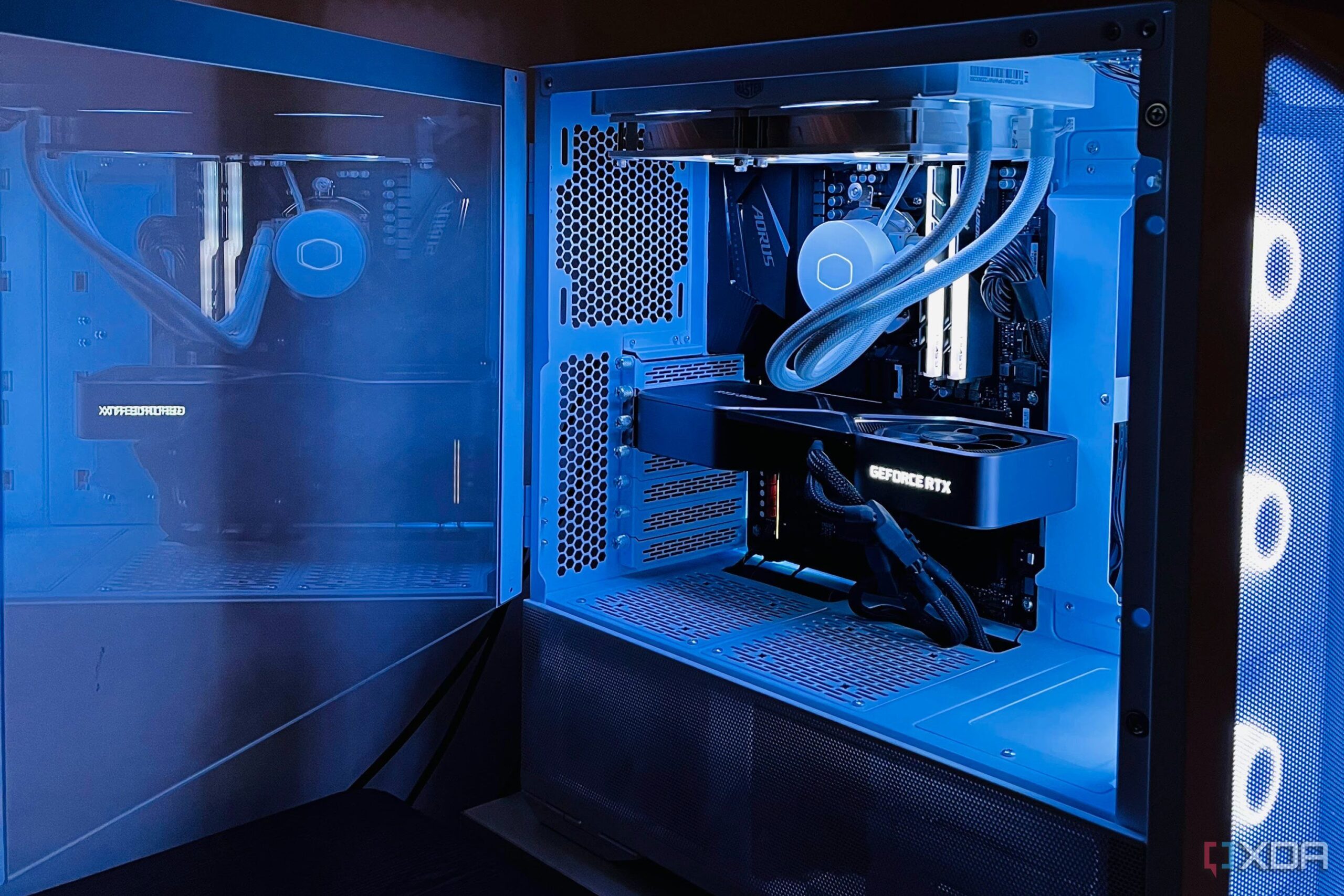Lifestyle
PC Case Designs Evolve: A Shift from Function to Form

The landscape of personal computer cases has undergone a significant transformation, blending aesthetics with functionality. While modern cases often feature sleek designs, tempered glass, and RGB lighting, many enthusiasts argue that they have become visually indistinguishable. The trend towards uniformity raises questions about the future of PC case innovation and design diversity.
From Utility to Uniformity
In the early 2010s, PC cases were primarily utilitarian. Their designs focused on practical features, prioritizing airflow and component size. Builders faced a chaotic interior filled with cables, bulky power supplies, and multiple drive cages. The standard included 5.25″ bays for optical drives and numerous hard drive slots. A successful build required creativity to manage the tangle of connections, and aesthetics took a backseat to performance.
During this time, the notion of a clean, visually appealing build was nearly nonexistent. Cases capable of housing a 240 mm radiator were considered expansive, and only high-end models like the Corsair 800D and Cooler Master HAF series offered modular designs suited for water-cooling. RGB lighting was a novelty, often limited to single-color LED fans or cold cathode tubes.
The Rise of RGB and Aesthetic Designs
By the mid-2010s, the introduction of RGB lighting revolutionized PC case design. Manufacturers began incorporating clear acrylic and tempered glass side panels to showcase the internal illumination. This shift marked the beginning of a design arms race, with nearly every component—from motherboards to power supply cables—featuring customizable lighting.
Solid front panels became less common as cases transitioned to glass fronts, allowing users to display their glowing components. The trend towards “aquarium” style builds emerged, where the goal was for every part to be visible and synchronized in color. Although these designs were initially captivating, the overwhelming similarity among builds on platforms like Reddit and YouTube soon became apparent.
As more lighting elements were added, the demand for transparent surfaces increased. This resulted in a homogenous design landscape, where even small details, such as cable lighting strips, became standard. While RGB undoubtedly enhanced the expressiveness of PC builds, it also contributed to a lack of diversity in case designs.
Emerging Trends: A Return to Practicality
Despite the dominance of glass-forward designs, a resurgence of utilitarian cases appears to be gaining traction. Recent models, such as the Fractal Terra, Lian Li O11 Air Mini, and Cooler Master NR200P, embrace simplicity while prioritizing performance. These cases are designed to optimize airflow and space efficiency, steering clear of the excessive RGB elements that characterized previous generations.
This evolution reflects a growing appreciation for subdued designs that allow for quieter and cooler operations. As the market trends shift back towards functionality, manufacturers like HYTE are also experimenting with innovative materials to create distinctive designs that break away from the norm.
In conclusion, the journey from heavy steel cases focused on practicality to the extravagant glass-and-RGB models of today illustrates the cyclical nature of design. While modern cases may have reached a point of visual sameness, the emerging focus on performance and simplicity suggests that the industry is moving towards a more balanced approach. Enthusiasts can look forward to a future where aesthetics and functionality coexist harmoniously.
-

 Politics2 weeks ago
Politics2 weeks agoDallin H. Oaks Assumes Leadership of Latter-day Saints Church
-

 Business1 week ago
Business1 week agoTyler Technologies Set to Reveal Q3 2025 Earnings on October 22
-

 Sports1 week ago
Sports1 week agoSteve Kerr Supports Jonathan Kuminga After Ejection in Preseason Game
-

 Lifestyle2 weeks ago
Lifestyle2 weeks agoDua Lipa Celebrates Passing GCSE Spanish During World Tour
-

 Health2 weeks ago
Health2 weeks agoCommunity Unites for Seventh Annual Mental Health Awareness Walk
-

 Entertainment2 weeks ago
Entertainment2 weeks agoZoe Saldana Advocates for James Cameron’s Avatar Documentary
-

 World2 weeks ago
World2 weeks agoD’Angelo, Iconic R&B Singer, Dies at 51 After Cancer Battle
-

 Science2 weeks ago
Science2 weeks agoChicago’s Viral ‘Rat Hole’ Likely Created by Squirrel, Study Reveals
-

 Lifestyle1 week ago
Lifestyle1 week agoKelsea Ballerini Launches ‘Burn the Baggage’ Candle with Ranger Station
-

 Health1 week ago
Health1 week agoRichard Feldman Urges Ban on Menthol in Cigarettes and Vapes
-

 Business2 weeks ago
Business2 weeks agoMLB Qualifying Offer Jumps to $22.02 Million for 2024
-

 Business2 weeks ago
Business2 weeks agoMega Millions Jackpot Reaches $600 Million Ahead of Drawings









